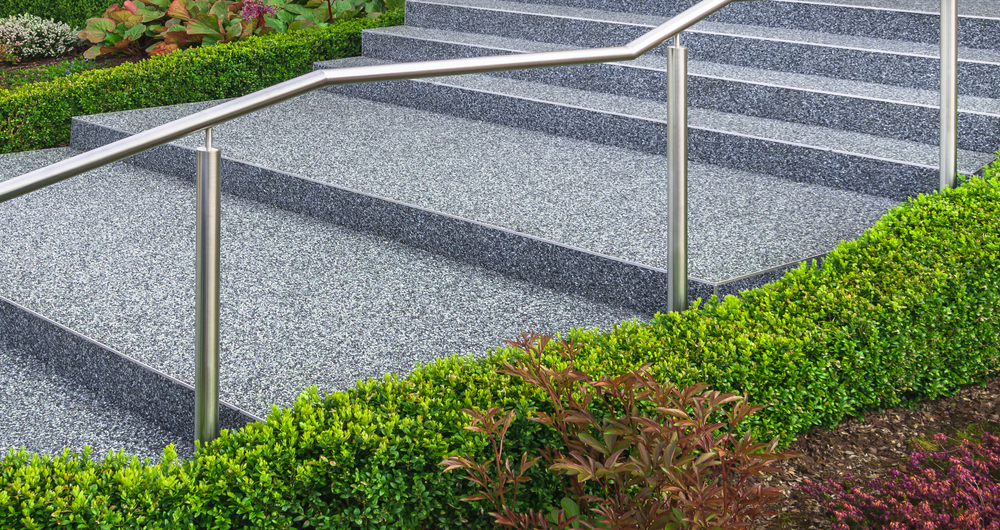In order to guarantee the security and assistance of everyone who visits or stays on a property, handrails are an essential element of the outdoor steps. Considering how crucial they are, handrails are frequently overlooked when building or remodeling a building. Every kind of stairway is available outside. Occasionally, staircases are designed more for visual appeal than for ease of access.
It’s essential when choosing the proper railings for outdoor steps for the security of everyone. You ought to investigate the construction codes that are applicable to your specific situation before becoming too excited about detailed handrail designs. You could be obligated to conform to particular accessibility and safety requirements, which may impact handrails, according to the area and type of structure.
In your location, VEVOR can offer outdoor stair railings kit solutions compatible with local regulations. They test all of their outdoor step handrails to guarantee they comply with IRC and IBC regulations. People can sustain significant injuries by slipping from a deck, subsequently, you should use particular care while installing deck railing. As a result, there are specific building requirements for deck railings.
Factors to Consider When Choosing an Outdoor Handrail
The choices most likely that will deliver the finest outcomes are however those that have been carefully weighed and researched. You may make a smart investment by taking the time to compile a list of factors to take into account when choosing an outdoor handrail. Smart property owners will want to take these things into account:
- ADA Compliance
Public spaces often need to have handrails that meet ADA requirements. If you are uncertain about the laws and regulations, it’s a good idea to check. Some communities also have criteria for private residences. Meeting these requirements might potentially increase property values by attracting safety-conscious buyers even when it’s not strictly necessary.
- Aesthetics
Handrails have two functions. They provide both aesthetic appeal and practicality. You should be able to find a handrail with your home’s construction, style, and color scheme with a little research.
- Durability
Any product that is employed outdoors must be suited to handling wear and weather problems. You can decide whether a handrail is an intelligent choice by taking the climate in your location into account.
- Needs for Maintenance
Some handrail systems need minimal to no upkeep. Some people can be extremely demanding. Before you pick up a handrail, find out if you’ll need to clean, paint, seal, or perform any other maintenance to preserve its look as well as its function.
- Price
The pricing variety for handrails is quite wide. Make sure you check past the initial expense. Think about the lifespan, the expense of installation, and the price of upkeep.
Selection of the Material
The following stage is to determine which type of material you want to use after examining building codes. The most common types will be described below, but some materials cannot be permitted in accordance with the rules for your unique placement. There are many different materials for outdoor handrails, so it’s simple to pick one that matches your tastes. A contrast of prominent materials helps you to consider the possibilities:
- Aluminum
For a variety of reasons, this inexpensive metal frequently tops lists of suggestions. To begin with, it’s strong, so if someone needs to grab the handrail, it provides a firm, trustworthy grip. It is robust. It won’t rust or corrode, and it stands up well in bad weather, so it will last for a very long period with no hassle.
It doesn’t need a lot of maintenance. Typically, cleaning is only necessary occasionally. Furthermore, lightweight, aluminum is suited for many applications and is simple to work with. You may pick a handrail that matches your tastes and décor because it comes in a wide variety of finishes and styles.
- Wood
As a result of its underlying beauty, wood has long been preferred. There are many opportunities, but superior wood can be pricey. A lot of upkeep is needed as well. You should be prepared to invest time and money on regular upkeep for a handrail made of wood because it is prone to insect infestation, warping, splitting, splintering, and other problems that can occur with wood.
- Wrought Iron
Because it can be formed, wrought iron has a certain air of antiquity. The material is unfortunately rust-prone. Additionally, the majority of the material’s handrails are too thin to offer a good grip. They consequently tend to be more aesthetically pleasing than useful.
Final Remarks
People are able to trip on steps that are too broad or too tall if they fail to pay attention, and polished stone steps become sticky in the winter. For many individuals, garden walkways with stairs might also be hazardous. The good news is that there are several outdoor railing solutions available that can improve both safety and aesthetics.





